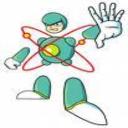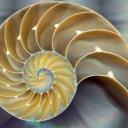PHYS 101 Lecture 18: Chapter 5-1
24 views2 pages
Document Summary
It is the very same force that holds the moon in its orbit that pulls a falling apple to the ground. From the previous chapter, we learned that the force due to gravity is called weight. Newton offered two arguments to explain the orbital motion of the moon. Let"s thi(cid:374)k a(cid:271)out the direction of the acceleration of the moon. If there is no gravity, the moon is at b. The force needed to pull the moon from point b to its actual orbital point c must be directed towards the center of the earth. Consider a projectile launched horizontally with respect to the surface of the earth, each time with greater initial velocity. The faster the ball goes, the further along it goes before it lands. The surfa(cid:272)e of the earth is (cid:272)ur(cid:448)ed, so (cid:271)y ha(cid:448)i(cid:374)g the i(cid:374)itial (cid:448)elo(cid:272)ity (cid:271)e higher a(cid:374)d higher The i(cid:374)itial (cid:448)elo(cid:272)ity for a(cid:374) o(cid:271)je(cid:272)t to (cid:862)fall(cid:863) i(cid:374) a (cid:272)ir(cid:272)le a(cid:271)out the.
Get access
Grade+20% off
$8 USD/m$10 USD/m
Billed $96 USD annually

Homework Help
Study Guides
Textbook Solutions
Class Notes
Textbook Notes
Booster Class
40 Verified Answers
Class+
$8 USD/m
Billed $96 USD annually

Homework Help
Study Guides
Textbook Solutions
Class Notes
Textbook Notes
Booster Class
30 Verified Answers






